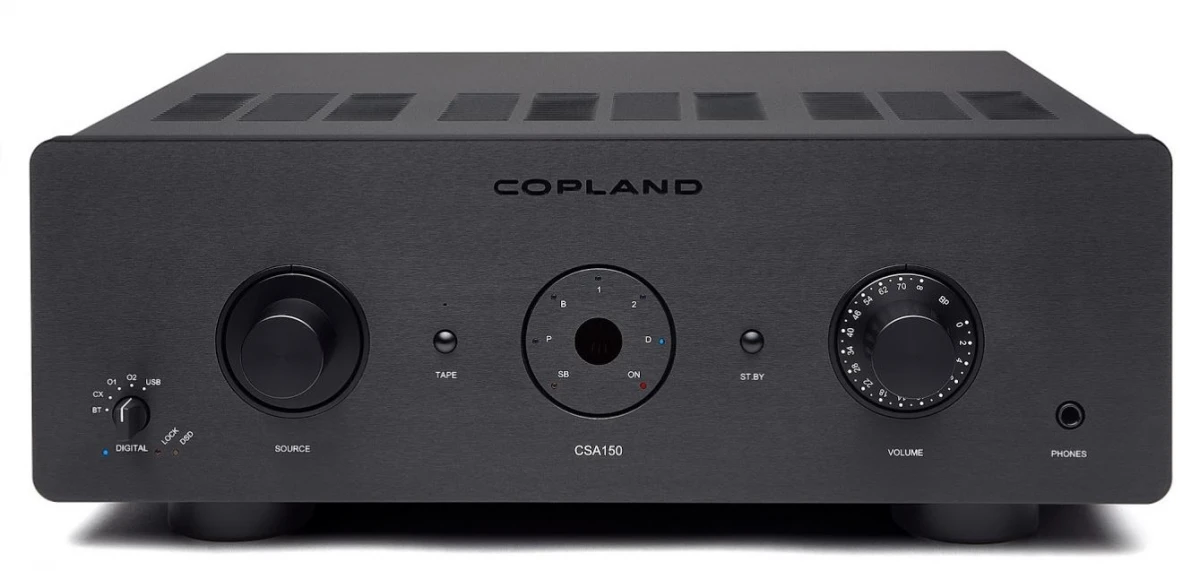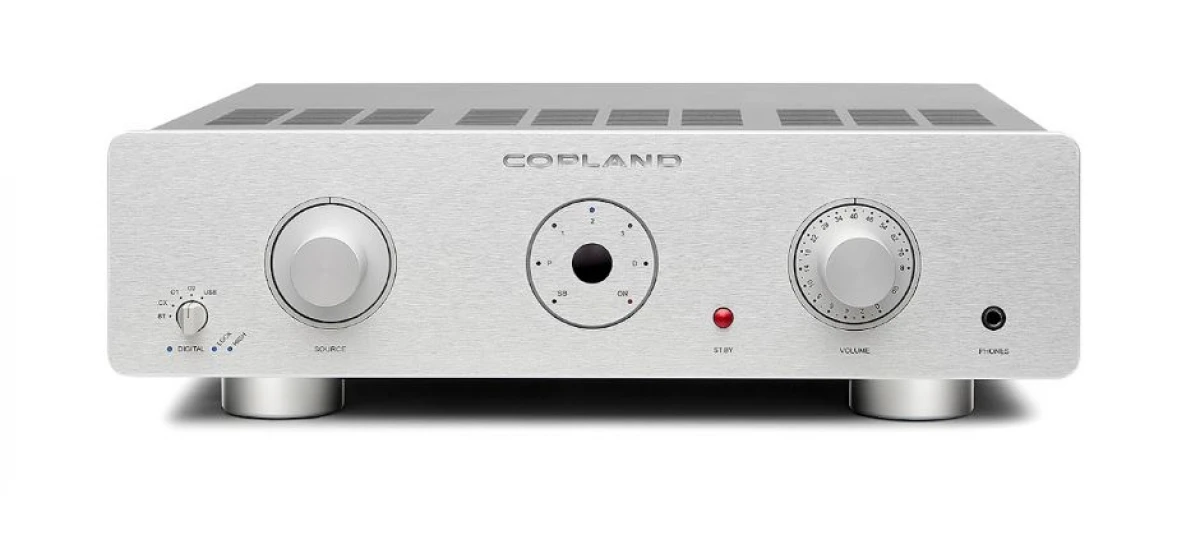Integrated amplifiers — Copland CTA407
Description, images, technical data and specifications
Copland CTA407
Image source — © Copland
The Copland CTA407 amplifier allows you to use any model of the 6550/KT88/KT120/KT150 family as output lamps – the proprietary lossless automatic offset adjustment system will determine the optimal operating mode of the selected lamps. The Copland CTA 407 is supplied with KT88 lamps in the output stages, two 12BH7 dual triodes and one ECC83 dual triode in the pre-amplification stages.


Specifications
Model name
CTA407
Type
Integrated Amplifier with DAC and Phono
Analog inputs (balanced)
N/A
Analog inputs (single-ended)
4 + 1 (Phono)
Input sensitivity (mV)
200
Input impedance (balanced) (Ω)
N/A
Input impedance (single-ended) (Ω)
50 000
Output impedance (balanced) (Ω)
N/A
Output impedance (single-ended) (Ω)
N/A
D/A conversion
Yes
Phono MM/MC current-sensing input impedance (Ω)
47 000
Output power (8Ω) (W)
50
Output power (4Ω) (W)
50
Gain (dBu)
N/A
Frequency response low +/- 3dB (Hz)
10
Frequency response high +/- 3dB (Hz)
150 000
Signal to Noise Ratio (dB)
100
Total Harmonic Distortion + Noise (%)
0.5
Damping factor
N/A
Dimensions (mm)
435 x 215 x 420
Weight (kg)
20
Official link
More components

Integrated amplifiers
Copland CSA150

Integrated amplifiers
Copland CSA100

Integrated amplifiers
Copland CSA70


